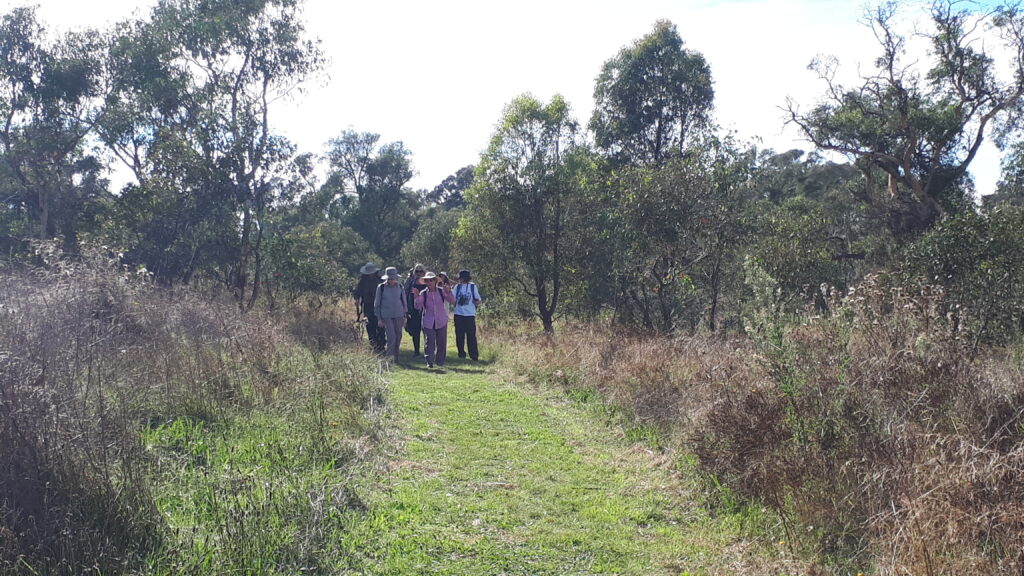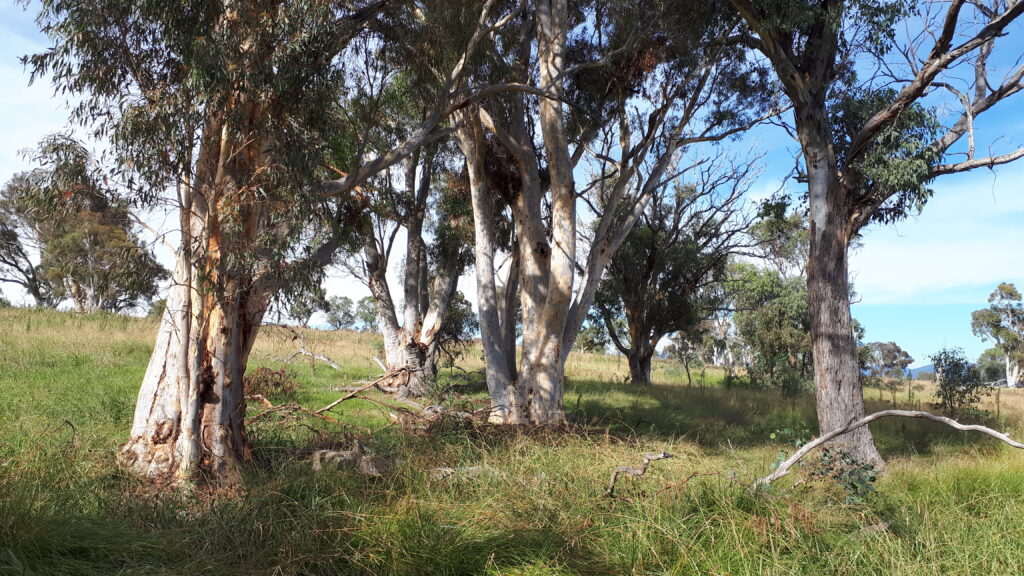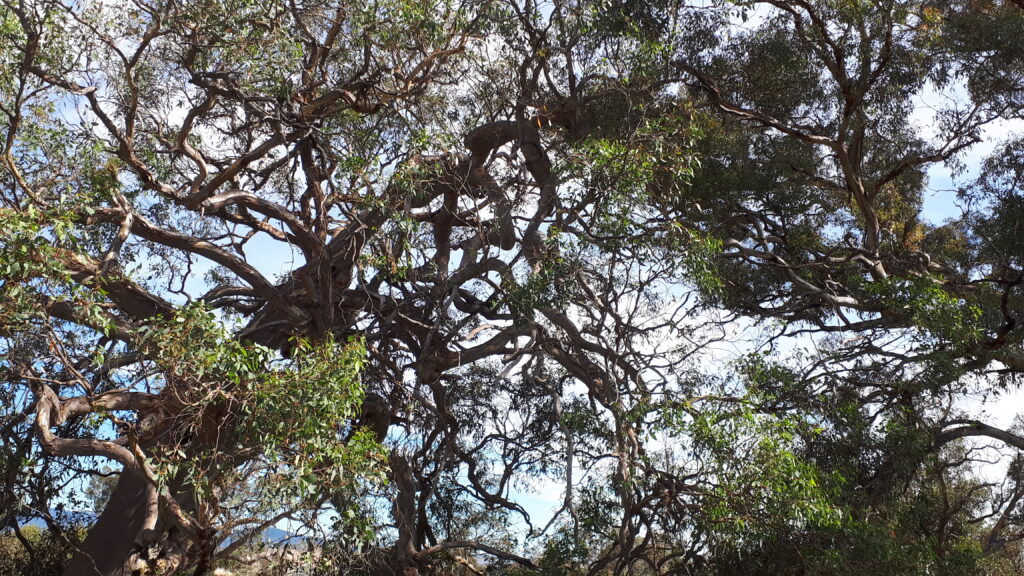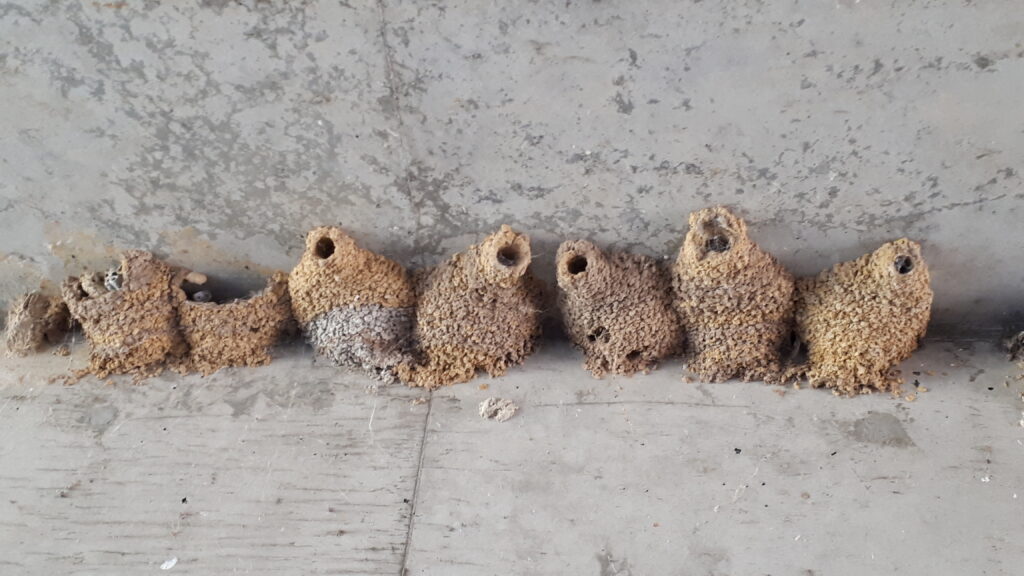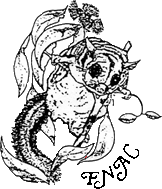When COG visited Kama Nature Reserve, a few weeks ago they saw four raptors and many other bird species but their walk began earlier In the morning than our 9.30 start. As we returned towards the step-through gate two hours later we were treated to the distant soaring and diving of three Nankeen Kestrels: russet grace and consummate skill against the blue sky.
Occasional clouds helped others located the small raptors from our excited directions.
Nearly a month later I write more, as the moon wanes three nights after its fullness. The weather has resumed its autumn perfection following the passage of a rainy front whose sunlessness changed our moods to gloom following elation.
I recall the time when 20 Field Natters and SGAP members gathered to explore Kama Nature Reserve on a day that reached 27 degrees. We treasured the eucalypts’ shade whilst wending back to William Hovell Drive.
As each naturalist moved observantly through the grassy woodland we created, recalled, shared and reflected on stories about the scores Of Organisms, habitats and scenes that stimulated our senses.
My mosaic of memories included:
Views: The awe-inspiring views across to the ranges to the ACT’s west and to the south of the Molonglo River. We wore blinkers to avoid seeing the ecocidal destruction of other species’ homes for more suburbs in the last kilometres of the river’s valley. Rustic gum trees: Ancient eucalypts are scattered across the once-grazed landscape. They’re now devoid of the nourishing companionship of Acacias consumed by hard-hooved, hungry stock that compressed the soil, which small, native mammals once restored with buried humus and aerated by their diggings.
Puddles: There ‘s a microcosmic aquatic world where polluted water drains off the road sustaining algae, mosses and a myriad of unseen invertebrates, which thrive ephemerally in spite of the water’s quality. Lythrum hyssopifolia thrives on the dampness and was compared with Japanese knotweed.
Frogs: Other grassed, damp habitats produced frog calls challenging our sound-based ID skills or our ability to use the Australian Museum s FroglD App. We were reminded of Lucy’s recent Field Natter article about cleaning out and re-establishing the small pond in their Macgregor garden.
Brachychitons: A cluster of seedlings — sapling Kurrajongs, deposited as seeds by Currawongs perched in the roadside vegetation, each seemingly displaying a different leaf form. How far had the bird flown, or which mature Kurrajong had produced the seeds? Brachychiton populneus, such a vital species for Indigenous peoples living off their country: food, fiber, water and ceremony.
Crane Fly: The bright orange Crane Fly, Gynoplistia species, identified by Canberra Nature Map’s volunteer moderators from the photograph of it hitch-hiking on Mike’s hat.
Groundcovers: Two mat-like native groundcovers, Einadia and Persicaria, were discussed for the abilities of holding bare soil crust together and preventing erosion. They generated admiration as dicotyledons taking over lichens’ soil-protective function.
Hemlock: The form of the hemlock Alison investigated, reminded me of the Cow Parsley we grew up with on a pint-sized Kentish farm and fed to our pet rabbits. Every part of the hemlock plant is poisonous.
Water: A dam, storing precious water for stock in a harsh-at-times landscape, was beautified by native Water Lilies Ottelia ovalifolia.
Ants: Shining Coconut Ants that had laboriously brought pieces of vegetation to the top of a large, lichened rock.
Grasses: We compared and studied the plentiful native grasses though often these were masked by the La Nina-stimulated growth of pasture grasses and other introduced species.
Nests of clay: Where the walls meet the ceiling of the underpass, ceramicist Fairy Martins had created bottle-shaped nests one beak-full of clayey mud at a time. Welcome Swallows’ nests, together with Potter Wasps’ nests also adorned the concrete. Where is the nearest source of mud for these industrious animals’ building endeavours?
Observations: As inveterate list-makers and classifiers we valued the species list from the Australian Native Plants Society (SGAP) members’ previous visit and compared notes on eucalypt identification.
Musings: Photographs, stories and artists’ sketches from Kama might morph into Nature Journaling as reflections on feelings, sights and sounds when immersed in nature, including biology, ecology are recorded in diverse and creative ways.
As we create stories around or share information about the organisms we observe, we may be coming close to Indigenous peoples’ ancient and universal traditions of passing on to others that which they needed to know in order to survive and thrive.
Are we, through our writings, following the universal, pre-literate tradition of orality where the encyclopaedia of life was shared with others during journeys through habitats and ceremonies in special places?
We each explored, remembered and may have passed on stories from our exploration of Kama in our own ways. We’re constantly curious about and awed by the discoveries waiting to be made around us. The First Knowledges series may excite your interest. The first book in 2021, Songlines: The Power and Promise by Margo Neale and Lynne Kelly may link naturalists’ creative records to Indigenous lives spanning back 60,000 years.
“Songlines are the means of storing and learning, knowledges, ancient and modern. They are stories embodied in the land, sea and skies to be remembered and passed on through song, dance, art, ceremony and most importantly, through attachment to Country.”
This ABC Radio National All in the Mind episode adds to understandings about Songlines:
https://www.abc.net.au/radionational/programs/ allinthemind/songlines-indigenous-memorycode/7581788
There’s also a Lynne Kelly TEDx presentation about the encyclopaedic memory achievements of preliterate peoples: Modern memory, ancient methods
– Rosemary Blemings
